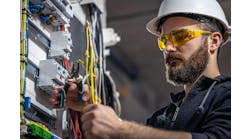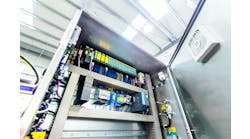When designing and implementing systems in hazardous locations, it’s always a good idea to put on your student hat and dig in.
Dust and gas make up the two most volatile environmental substances we know. There are various classifications of each sector, with subdivisions in each. The main reason for automation devices in these locations is, of course, to bring the control to the operators and the process.
But we can’t have an operator pressing a button and blowing up the environment.
Also read: Safety standards, regulations and requirements protect humans and machines
One of the main instruments of localized control and monitoring is the human-machine interface (HMI). The application of rated HMI screens and enclosures requires some pretty interesting strategies.
Do you place the actual touchscreen HMI within the confines of the environment allowing the HMI to directly access the control network? Or do you simply have a monitor with the computer running the HMI software in a non-hazardous location? Do you need an intrinsically safe video connection to feed the monitor?
There have been some interesting solutions, including a mobile tablet that connects wirelessly to the network, which mimics the HMI screen located somewhere else. This tablet would be rated for the environment.
The most common solution it seems is having a purge-and-pressurization system for enclosures that houses general-purpose equipment and can be employed in the hazardous location environment.
So, for HMI solutions you would use a rated touchscreen in the face of the enclosure and use a controlled purge and pressurization system for the content of the enclosure such as a standard board level computer with networking. Even the PLC/PAC could be mounted in the same enclosure.
In a hazardous gas application, the purge-and-pressurization system creates a safe environment for operation by first removing or purging the bad gas from the enclosure, and then it creates a positive pressure inside the enclosure to ensure that no other gas can infiltrate the cabinet seal.
In the good old days, a hazardous enclosure had a large flange that had to be milled to a certain spec, and the flange width had to be sized to allow any ionized air to be cool by the time it left the enclosure. These enclosures were large, heavy and expensive. To have an enclosure to house a PLC/PAC with an embedded HMI would be cost-prohibitive.
HMI design in these types of environments need to be specific for touchscreen or keyboard access. There are hazardous-location keyboards available, if needed, and thus the screen design can be tailored for use with a keyboard and mouse. Touchscreens with built-in function keys may be harder to find, so the screen design needs to take the operator-interface style into account.
In effect, using an HMI in hazardous locations simply requires the right enclosure and purge-and-pressurization system to be certified.
In a hazardous-dust situation, you have to physically remove any of the combustible material, which may have settled in there during installation, from the enclosure. Once completed, closing the enclosure and implementing the purge-and-pressurization system will keep the components in the enclosure clean, cool and safe.
While I haven’t seen any large installations with my own eye, these types of systems can be used in very large enclosures where the control strategy for the application can be simplified since the design will be ‘normal’ with the addition of an adequately sized purge-and-pressurization system.
It’s all about the internal air pressure after purging. Having said that, the enclosure’s metal gauge may have to be reinforced due to the increased pressure introduced into the space. This is likely to depend on the volume of the enclosure since it would have larger surface areas of just plain metal. The gauge of these panels would be important.
In my experience, it’s always best to consult with an expert, as I did with Ian Verhappen, an oil-and-gas automation expert who guided me with some valuable information.
It’s really all about how you want to implement your hazardous-location HMI applications. There are intrinsically safe units available, but only for certain classes, divisions and zones. The selection process needs to be very complete, based on the environment you are dealing with.
This must be totally understood before a solution can be found. Regardless, a purge-and-pressurization system can be implemented for your HMI application.
About the author: Jeremy Pollard
Jeremy Pollard, CET, has been writing about technology and software issues for many years. Pollard has been involved in control system programming and training for more than 25 years.





